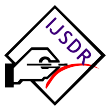Imp Links for Author
Imp Links for Reviewer
Research Area
Subscribe IJSDR
Visitor Counter
Copyright Infringement Claims
Indexing Partner
|
Published Paper Details
|
|
| Paper Title: | Study of Effects of Controlling Morah and Feeding on Jute Yarn Quality |
| Authors Name: | Soumita Chowdhury , Sandip Roy , Arun Kumar Kamat , Juee Nag Majumdar |
| Unique Id: | IJSDR2308099 |
| Published In: | Volume 8 Issue 8, August-2023 |
| Abstract: | Jute is cultivated in tropical areas as one of the most strong and reasonably priced bast fibers. Jute fiber and products are chiefly popular for its basic natural fibre properties and manufactured in industries to use as B.Twill food grain bags, other packaging materials, geotextiles, export quality bags etc. This study is about a understanding of yarn quality produced after use of morahs with standard weight and control feeding at jute Spreader machine. Machinery used for jute fibre processing is quite old and manufactured with old technology. Hence still now the weight and regularity control of jute yarn are based on manual weight control on jute morah as well as the manual feeding rate control at spreader machine. Here in the study efforts has been given to identify the effect of control on morah weight at starting material of jute processing and the effect of morah feeding regularity on jute yarn quality. Based on which, in future any development can be done for mechanical control on morah weight as well morah feeding at spreader. Presently jute fibre/ yarn used in several diversified products other than food grain packaging bag. To improve the quality of jute yarn a study has been carried out in a jute mill where the quality of jute yarn produced by Mill normal process (normal morah and feeding ) is compared with quality of yarn produced by control morah& control feeding. As mill normal process is available presently, total four process are compared based on yarn quality produced by them. It is found that the controlling morah weight and also controlling feeding of morah at Spreader machine plays an important role on jute yarn quality in comparison to without controlling the above. Controlling morah weight and also controlling feeding morah at Spreader machine in jute mills will improve the quality of the output sliver. This sliver will be useful for producing regular and fine jute yarn with higher tensile strength, breaking elongation, quality ratio and lower count variation percentage. The produced modified yarn will also be more regular and uniform comparing to the yarn of uncontrolled morah weight and feeding system. |
| Keywords: | Jute morah, Spreader, quality ratio, morah weight, sliver weight |
| Cite Article: | "Study of Effects of Controlling Morah and Feeding on Jute Yarn Quality", International Journal of Science & Engineering Development Research (www.ijsdr.org), ISSN:2455-2631, Vol.8, Issue 8, page no.681 - 692, August-2023, Available :http://www.ijsdr.org/papers/IJSDR2308099.pdf |
| Downloads: | 000338719 |
| Publication Details: | Published Paper ID: IJSDR2308099 Registration ID:208094 Published In: Volume 8 Issue 8, August-2023 DOI (Digital Object Identifier): Page No: 681 - 692 Publisher: IJSDR | www.ijsdr.org ISSN Number: 2455-2631 |
|
Click Here to Download This Article |
|
| Article Preview | |
|
|
|
Major Indexing from www.ijsdr.org
| Google Scholar | ResearcherID Thomson Reuters | Mendeley : reference manager | Academia.edu |
| arXiv.org : cornell university library | Research Gate | CiteSeerX | DOAJ : Directory of Open Access Journals |
| DRJI | Index Copernicus International | Scribd | DocStoc |
Track Paper
Important Links
Conference Proposal
ISSN
 |
 |
DOI (A digital object identifier)
  Providing A digital object identifier by DOI How to GET DOI and Hard Copy Related |
Open Access License Policy
Social Media
Indexing Partner |
|||
| Copyright © 2024 - All Rights Reserved - IJSDR | |||






Facebook Twitter Instagram LinkedIn